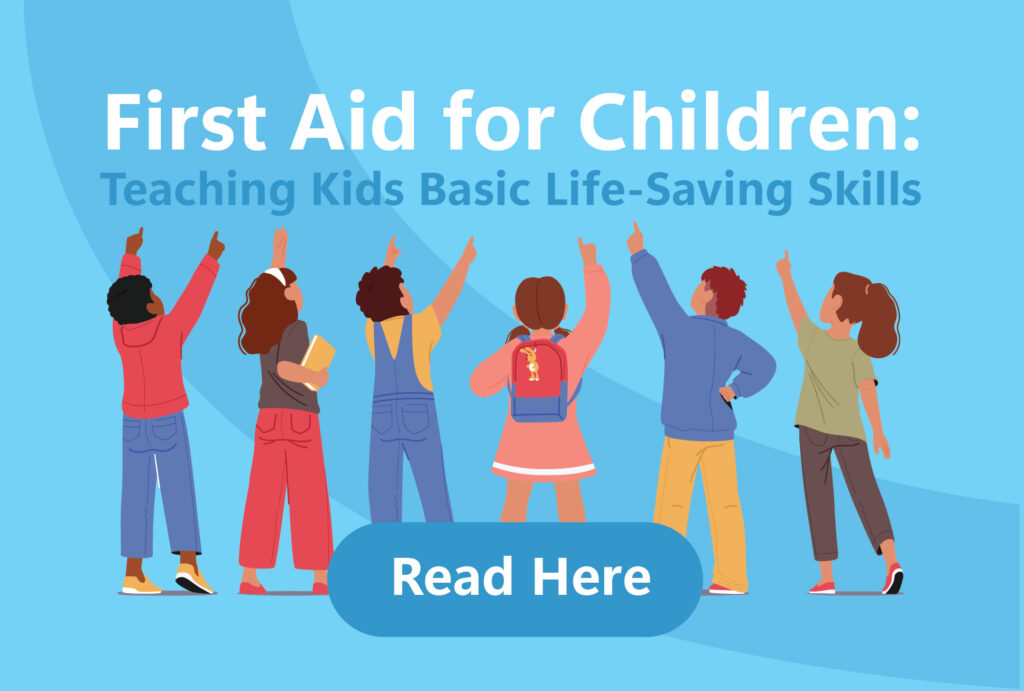First Aid for Children: Teaching Kids Basic Life-Saving Skills
Teaching children basic first aid skills is an invaluable way to empower them and ensure they can act confidently in emergencies. By introducing these life-saving techniques at a young age, children can develop the knowledge and confidence to help themselves and others when it matters most. This guide covers essential first aid skills that children can learn and how to teach them effectively.
1. Why Teach First Aid to Children?
Children are naturally curious and quick learners, making them excellent candidates for basic first aid training:
- Empowerment: Teaching kids first aid gives them the tools to act in emergencies, reducing fear and increasing their sense of responsibility.
- Preparedness: Accidents can happen at any time. By learning first aid, children are better prepared to handle unexpected situations.
- Promoting Safety: Understanding first aid helps children develop an awareness of safety and the importance of preventing injuries.
2. How to Introduce First Aid Concepts to Kids
When teaching first aid to children, it’s important to make the information accessible and engaging:
- Keep It Simple: Use age-appropriate language and focus on basic concepts that are easy for children to understand.
- Use Hands-On Learning: Demonstrate first aid techniques with practical exercises. Kids learn best by doing, so involve them in role-playing scenarios.
- Make It Fun: Incorporate games, songs, and interactive activities to keep children engaged while learning.
- Use the ProTrainings free Student First Aid Program: We launched a free video online course in first aid for children many years ago to train children of all ages in life-saving first aid, and we have a program to help schools and organisations teach our course for free.
3. Key First Aid Skills for Children
Here are some essential first aid skills that children can learn:
1. Calling for Help
- Teaching the Skill: Explain the importance of knowing when and how to call for help. Teach them to dial 999 in the UK and clearly communicate the situation to the operator.
- Practice: Role-play different scenarios where they might need to call for help, ensuring they understand what information to provide, such as their location and what happened.
2. Treating Minor Cuts and Scrapes
- Teaching the Skill: Show children how to clean a small wound with water and apply a plaster or bandage.
- Practice: Use a teddy bear or a doll to practice cleaning and bandaging pretend wounds.
3. The Recovery Position
- Teaching the Skill: Explain that the recovery position helps someone who is unconscious but breathing stay safe until help arrives. Demonstrate how to gently roll a person onto their side and tilt their head back to keep the airway open.
- Practice: Let children practice the recovery position with a classmate or family member under supervision.
4. Helping Someone Who Is Choking
- Teaching the Skill: Explain the signs of choking and how to help. For older children, demonstrate back blows and abdominal thrusts (Heimlich manoeuvre).
- Practice: Use a soft toy or a pillow to practice the motions of back blows and abdominal thrusts.
5. Basic CPR (for Older Children)
- Teaching the Skill: For older children, introduce the concept of CPR. Explain that CPR involves chest compressions to help someone whose heart has stopped beating.
- Practice: Use a CPR manikin to practice the correct hand placement and compression technique. Emphasise the importance of calling for help before starting CPR.
4. Reinforcing First Aid Knowledge
Repetition and reinforcement are key to helping children retain their first aid knowledge:
- Regular Practice: Set aside time for regular first aid practice sessions. This could be done monthly or as part of a safety day at school.
- Use Visual Aids: Posters, flashcards, and diagrams can help children remember the steps for different first aid procedures.
- Encourage Discussion: Create an open environment where children feel comfortable asking questions and discussing what they’ve learned.
5. Building Confidence in Kids
Building confidence is just as important as teaching the technical skills:
- Praise Efforts: Always praise children for their efforts in learning first aid, even if they don’t get it perfect right away.
- Provide Reassurance: Let them know that it’s okay to be scared in an emergency, but their knowledge can help make a difference.
- Encourage Responsibility: Encourage kids to take on roles in safety drills at school or home, reinforcing their sense of responsibility.
Conclusion
Teaching children basic first aid skills is an investment in their safety and the safety of others. By equipping them with these life-saving skills, you empower them to act confidently and effectively in emergencies. Start with simple concepts and build on their knowledge as they grow, fostering a lifelong awareness of health and safety.
